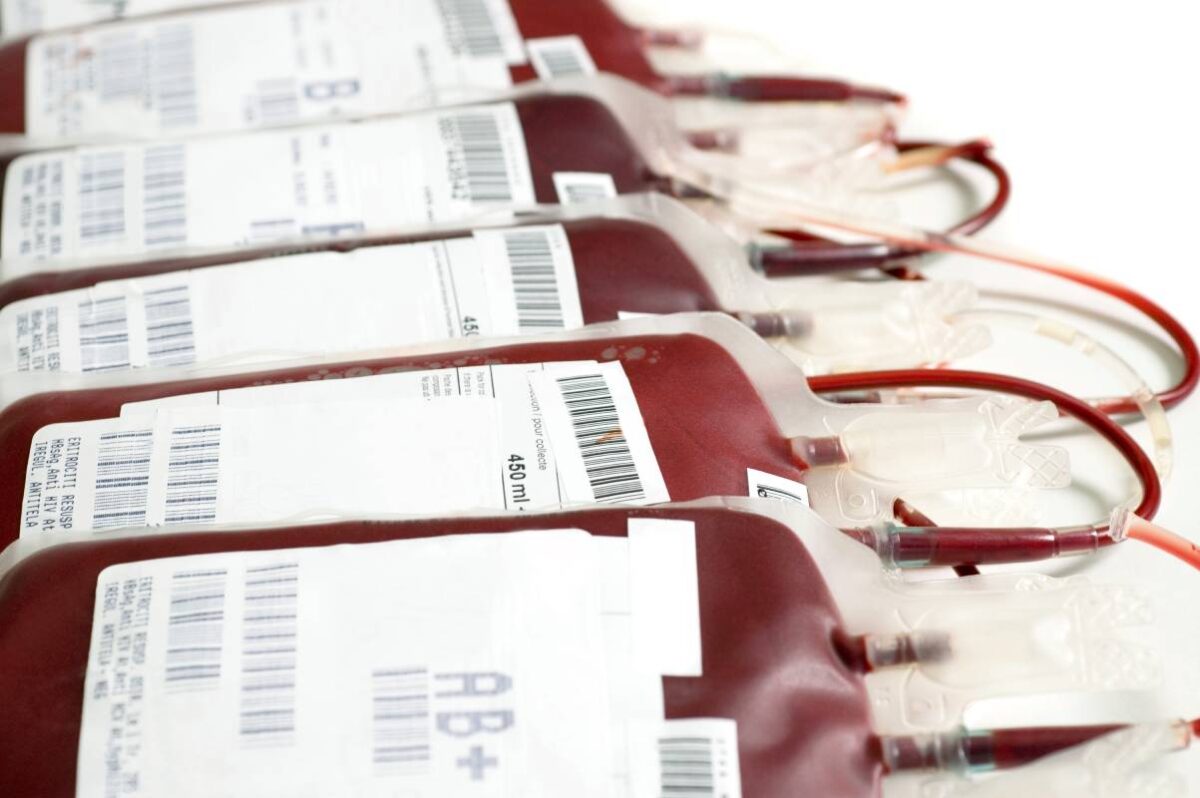Adverse Effects of Blood Transfusions in Surgery

A blood transfusion, which replaces blood lost due to surgery or injury, is a potentially life-saving procedure. Blood transfusions are generally considered safe but do result in adverse effects in some cases. Mild complications—and, rarely, severe ones—can occur during the transfusion or several days or more after 1.
Intraoperative blood transfusion is associated with a higher risk of mortality and morbidity in surgical patients who suffer from severe anemia 2. However, the reason for this association remains unknown.
Acutely, patients can experience an allergic reaction, acute immune hemolytic reaction, or circulatory overload. Allergic reactions might result in hives, itching, and fever. If the donor blood type is not a good match, the immune system can attack the transfused blood cells. This can result in an acute immune hemolytic reaction classically characterized by fever and pain. The attacked cells also release a substance into the blood that is harmful to the kidneys and results in red or brown urine. Transfusion-associated circulatory overload results in the signs or symptoms of excess fluid in the circulatory system. These include dyspnea, tightness in the chess, cough, and distended veins. Peripheral and pulmonary edema may also develop. These typically occur within 12 hours of the blood transfusion. However, these three reactions can be avoided through careful protocols.
Blood transfusions may also result in adverse effects after some time has passed. One potential complication is a hemolytic reaction which occurs more slowly than an acute hemolytic reaction. In a delayed hemolytic reaction, it can take 1 to 4 weeks to identify a decrease in red blood cell levels.
Graft-versus-host disease can result if white blood cells attack a patient’s bone marrow following a blood transfusion. This serious condition is generally fatal; it is more likely to affect severely immunocompromised individuals, such as those undergoing leukemia or lymphoma treatments.
Blood banks screen donors and test donated blood in order to minimize the risk of transmitting a bloodborne infection. While extremely rare, infections may be transmitted, such as HIV, hepatitis B, or hepatitis C.
Pulmonary complications are among the potential adverse effects of blood transfusions, though they are relatively uncommon. Research has found that transfusion-related pulmonary complications occur in under 4% of cases for both adults and children 3. However, researchers hypothesized that the real incidence in children may be higher because these events continue to be grossly underreported in clinical practice.
A particular subgroup of patients may be at greater risk of adverse effects from blood transfusions – spine surgery patients. Research has identified increased rates of perioperative morbidity and worse outcomes for these patients when receiving blood transfusions 4. However, a recent meta-analysis concluded that additional prospective, randomized controlled studies are required to confirm the specific effects of perioperative blood transfusion on spine surgery outcomes.
Unnecessary blood transfusions can be avoided by both respecting better blood conservation techniques during surgery, as well as by prioritizing anesthesia techniques that reduce blood loss 5. New evidence-based algorithms guiding transfusion, alongside improved hemovigilance, can also help perioperatively prevent unnecessary transfusions. Better blood screening methods have greatly minimized infectious complications. However, universal leukoreduction of red blood cells and careful selection of potential donors can continue to help minimize adverse effects from blood transfusions.
The search for blood substitutes has been ongoing for hundreds of years 6. Despite no clear technology yet, researchers continue to advance the development of artificial blood.
Evidence-based medicine has transformed clinical practice, and clinicians continue to optimize protocols to minimize the adverse effects of blood transfusions in surgery 7.
References
1. Blood transfusion – Mayo Clinic. Available at: https://www.mayoclinic.org/tests-procedures/blood-transfusion/about/pac-20385168. (Accessed: 21st November 2022)
2. Glance, L. G. et al. Association between Intraoperative Blood Transfusion and Mortality and Morbidity in Patients Undergoing Noncardiac Surgery. Anesthesiology 114, 283–292 (2011). doi: 10.1097/ALN.0b013e3182054d06.
3. Thalji, L. et al. Incidence and epidemiology of perioperative transfusion-related pulmonary complications in pediatric noncardiac surgical patients: A single-center, 5-year experience. Anesth. Analg. (2018). doi:10.1213/ANE.0000000000003574
4. Zhou, J. J., Hemphill, C., Walker, C. T., Farber, S. H. & Uribe, J. S. Adverse Effects of Perioperative Blood Transfusion in Spine Surgery. World Neurosurgery (2021). doi:10.1016/j.wneu.2021.01.093
5. Sahu, S., Hemlata & Verma, A. Adverse events related to blood transfusion. Indian Journal of Anaesthesia (2014). doi:10.4103/0019-5049.144650
6. Artificial Blood: The Future of Patient Care? — Stanford Blood Center. Available at: https://stanfordbloodcenter.org/pulse-artificial-blood-the-future-of-patient-care/. (Accessed: 21st November 2022)
7. Perioperative blood management: Strategies to minimize transfusions – UpToDate. Available at: https://www.uptodate.com/contents/perioperative-blood-management-strategies-to-minimize-transfusions. (Accessed: 21st November 2022)
